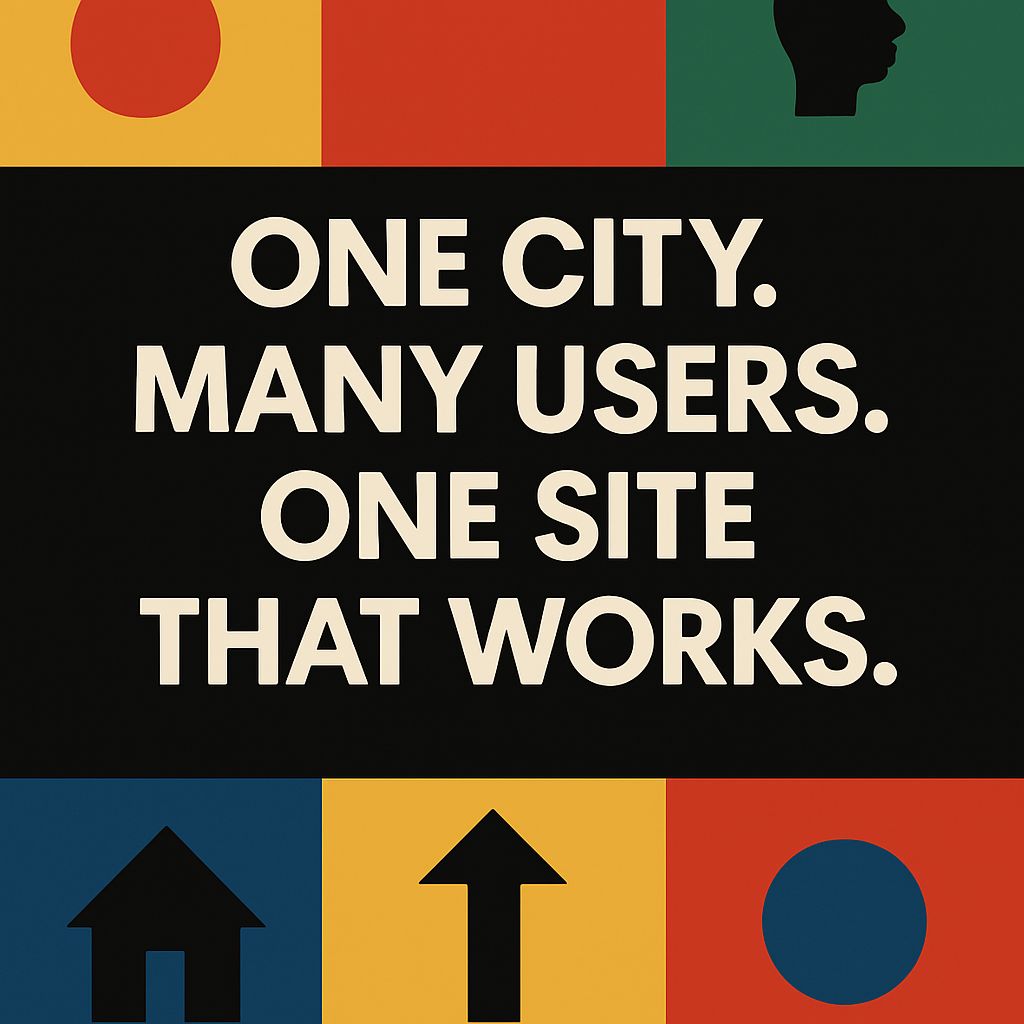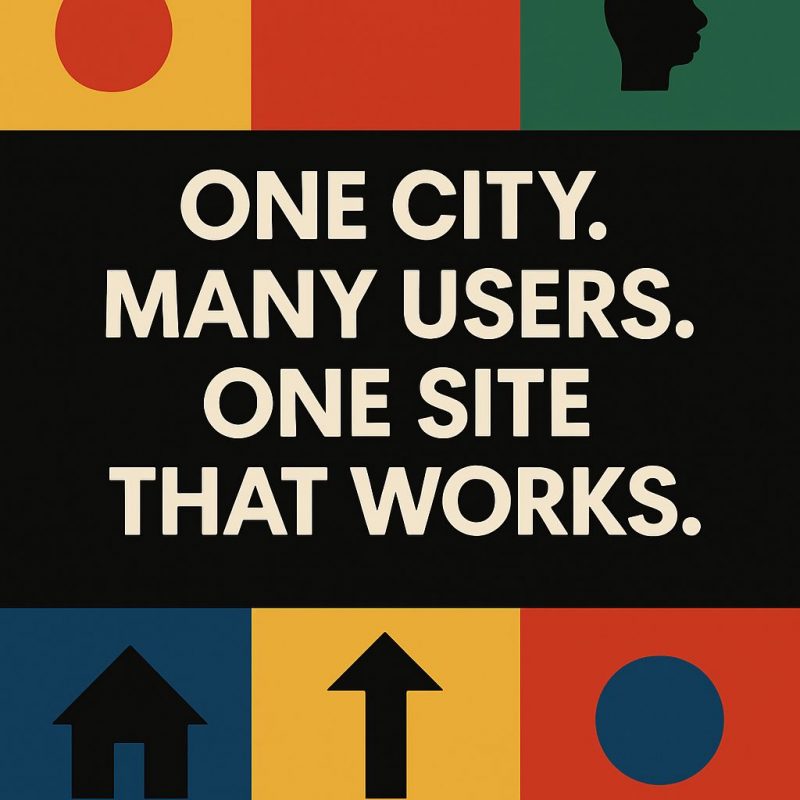How to Design a Website That Performs Across Atlanta’s Diverse Audiences
Atlanta isn’t one market. It’s many. From the luxury expectations in Buckhead to the artistically driven energy of East Atlanta, to the enterprise-focused decision makers in Midtown and the community-rooted businesses in South Fulton, each pocket of the city brings distinct audience behaviors, priorities, and digital fluency. Designing a website for “Atlanta” means designing for contrast, not uniformity. A high-converting platform must meet users where they are, not just in terms of content, but also in how it loads, flows, and feels across different segments of the city. For example, a boutique law firm in Inman Park will likely attract visitors looking for immediate credibility, clear navigation, and mobile-optimized consultation forms. Meanwhile, a creative agency in Poncey-Highland might win more with visual storytelling, horizontal scroll galleries, and animated case studies. Knowing your audience in Atlanta means understanding how hyperlocal dynamics shape digital expectations. Smart website design starts with behavioral mapping: what your users need, what device they use, what frustrates them, and what wins their trust. The result isn’t just a “pretty site.” It’s a user experience engineered to meet the cultural and functional expectations of Atlanta’s layered audiences. If your current site isn’t designed with this level of awareness, it’s not designed for Atlanta.
The Real Cost of Poor UX on Your Atlanta Business Website
A poor user experience doesn’t always look broken. It just feels wrong. The menu that hides instead of helps. The form that takes too many steps. The mobile view that sort of works but not quite. In a city like Atlanta, where time, trust, and momentum are everything, poor UX doesn’t just hurt feelings. It costs real money. Consider a service-based business in Sandy Springs targeting family-focused customers. If the booking form requires more than two taps to access or the page reloads poorly on iOS, you’ve already lost half your audience. Or take a Midtown consulting firm catering to B2B clients. If the site lacks logical flow between services and trust indicators, that firm instantly loses credibility with high-stakes clients browsing during lunch breaks. Poor UX damages more than conversion rates. It diminishes brand equity. Every second of friction communicates disorganization. Every hard-to-use feature undermines confidence. And in Atlanta, where users expect intuitive design and fast results, they’re quick to click away and remember the frustration. Investing in UX isn’t optional. It’s structural. If your site isn’t helping the user move forward, on any device, at any speed, for any goal, it’s actively pushing them out the door.
From Buckhead to Decatur: Why Localized Web Design Outperforms Generic Builds
Atlanta’s digital climate is fragmented. That’s exactly why localization wins. Buckhead businesses often cater to an affluent, time-starved audience that expects luxury aesthetics and instant clarity. Meanwhile, Decatur brands lean more toward values-driven storytelling, long-form content, and communal tone. A generic, plug-and-play website can’t speak both languages. And usually speaks neither well. Localization in web design isn’t just about dropping in a city name or embedding a Google map. It’s about shaping the tone, pace, and architecture of the entire site around your neighborhood’s expectations. A retail brand in Atlantic Station might prioritize frictionless Shopify flows and real-time inventory integrations, while a wellness brand in Grant Park may lean on soft transitions, case studies, and educational CTAs. When your website feels like it “gets” the user, because it mirrors their values, context, and pace, they’re far more likely to convert. In Atlanta, digital empathy translates into engagement. And engagement is what fuels everything: rankings, inquiries, sales, and loyalty. A localized site doesn’t have to scream Atlanta. It just needs to behave like it belongs here.

5 Reasons Your Atlanta Website Isn’t Converting, and How to Fix It
Conversion issues don’t start on the thank-you page. They start at the first impression. If your Atlanta-based website isn’t converting visitors into customers, it’s likely because it’s failing in one of five places: speed, structure, message clarity, mobile usability, or lack of directional flow. First, speed. Atlanta users are multitasking. If your site takes more than three seconds to load, especially on mobile, they’re gone. Second, structure. If your site architecture is flat or incoherent, search engines and users both struggle to navigate it. Third, clarity. If your core value proposition doesn’t hit in the first five seconds, you’re relying on attention you haven’t earned. Fourth, mobile usability. In Atlanta’s mobile-first environment, a desktop-optimized site is a liability, not a fallback. Fifth, direction. If you don’t have clear CTAs, breadcrumb navigation, and progression logic, your users wander aimlessly—or worse, leave. The solution? A data-informed rebuild. Not a new theme. Not more animations. A real strategy rooted in user behavior, conversion heuristics, and Atlanta-specific audience needs. Because when your site is designed to answer questions, reduce friction, and guide decisions, conversions stop being a mystery. They start being measurable.
Webflow vs. WordPress: Which Platform Fits Your Atlanta Business Best?
Platform choice isn’t about trend. It’s about fit. In Atlanta’s dynamic business environment, whether you choose Webflow or WordPress can have real implications for performance, flexibility, and control. WordPress, with its massive ecosystem and plugin availability, is ideal for content-heavy sites, SEO scalability, and complex blog networks. Perfect for local news sites, law firms, and enterprise content marketers in places like Midtown and North Druid Hills. But it also brings maintenance needs, security risks, and plugin conflicts if not properly managed. Webflow, by contrast, offers visually expressive, fast-loading sites with fewer backend headaches. It’s perfect for design-driven businesses. Think boutique agencies in Castleberry Hill or wellness brands in Cabbagetown who want precision control over layout without depending on developers for every tweak. For most Atlanta-based businesses, the decision comes down to how often your content changes, how customized your layout needs to be, and how much control you want in-house. The worst choice? Letting your platform dictate your brand. The best choice? Building on a system that aligns with your growth goals, technical comfort, and audience expectation. Don’t pick based on hype. Pick based on performance.
Conclusion: The Site You Need in a City That Moves Fast
Atlanta doesn’t wait for mediocre websites to catch up. In a city defined by cultural diversity, rapid expansion, and hyper-local buyer behavior, your website has to be more than functional. It has to be precise. It has to move with your audience, reflect your identity, and anticipate their needs before they click away. And most of all, it has to be built with strategy, not shortcuts. At Southern Digital Consulting, we understand that effective web design in Atlanta isn’t about a pretty homepage. It’s about performance architecture. We’ve worked with businesses across Buckhead, Decatur, Midtown, and beyond to craft sites that speak directly to the city’s layered digital landscape. Whether you’re launching from scratch or rebuilding to compete, we don’t just design websites. We build revenue infrastructure.
📍 Looking for an Atlanta website design company that understands your market and your mission? Let’s talk about how to turn your platform into your most powerful sales asset.

